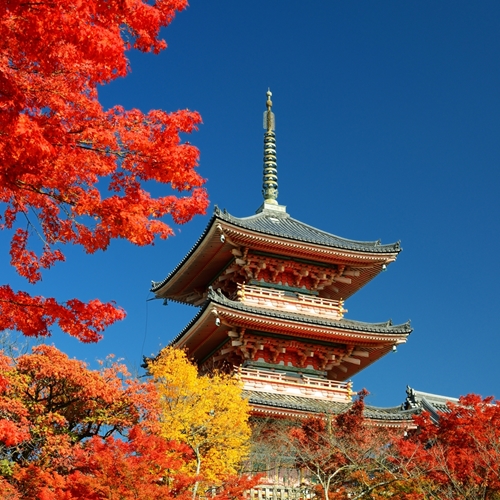 For thousands of years, Kyoto, not Tokyo, was the capital of Japan. From this imperial seat the Japanese Emperor would hold court and conduct the daily affairs of running the state. As a result, a thriving food culture developed in order to feed not only the ruler and his royal attendants, but every class of people who had moved to the bustling city in one of Japan’s most thriving crossroads. The culinary tradition of Kyoto and the surrounding region is known as kyo-ryori?, and has the distinction of being one of the most refined cooking and dining styles in the world. For fans of minimal cuisine, kyo-ryori is a must-see.
For thousands of years, Kyoto, not Tokyo, was the capital of Japan. From this imperial seat the Japanese Emperor would hold court and conduct the daily affairs of running the state. As a result, a thriving food culture developed in order to feed not only the ruler and his royal attendants, but every class of people who had moved to the bustling city in one of Japan’s most thriving crossroads. The culinary tradition of Kyoto and the surrounding region is known as kyo-ryori?, and has the distinction of being one of the most refined cooking and dining styles in the world. For fans of minimal cuisine, kyo-ryori is a must-see.
Types of kyo-ryori
The cuisine of the ancient Japanese capital is broken down into four classes. Yusoku ryori is the food that was eaten by the Emperor and members of court. It is the most refined style of kyo-ryori. Kaiseki ryori is food that has developed around the traditional Japanese tea ceremony. Traditionally it consisted of one rice dish, one soup dish and three side dishes, though modern iterations often include many more small plates. Shojin ryori is named for the priests and monks that it was prepared for. Finally, obanzai refers to the common food found in homes all around the Kyoto region.
Similarities among styles
All four of the kyo-ryori styles have certain similarities that unite the region’s culinary tradition. The emphasis in this cooking style is always to highlight the natural flavor of seasonal ingredients. This means that very little heat or cooking is used to prepare dishes, as chefs prefer to use raw, local, seasonal produce. Since Kyoto is located inland, it was a bit difficult to get fresh fish to the table. Instead, chefs began embracing tofu and tofu products to create a range of textures in their dishes without the use of fish. As such, kyo-ryori differs greatly from that other great Japanese food tradition, sushi.
Artful presentation
Perhaps one of the most striking things about kyo-ryori cuisine is the high degree of artistry with which dishes are plated. Each plate is infused with elements of ikebana, the Japanese art of flower arranging. Often, plants from the season are incorporated into the plating to connect the dish back to the natural world from whence it came. The result is a meal that is as beautiful to look at as it is delicious to eat.


